Climate of West Bengal
The climate of West Bengal varies from tropical savannah in the southern portions to humid subtropical in the north.
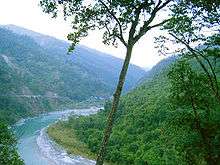
Seasons
There are five main seasons in West Bengal: spring, summer, rainy season, a short autumn, and winter.
Spring
A short spring is expected in some parts of the state, especially in the northern parts North Bengal. That is the time when Holi takes place.
Summer
The summer season extends from first week of March to June . While the summer in the delta region is noted for excessive humidity, the western highlands experience a dry summer like northern India, with the highest day temperature ranging from 38 °C (100 °F) to 45 °C (113 °F).[1] The average temperature is 30 degrees Celsius.
At nights, a cool southerly breeze carries moisture from the Bay of Bengal bringing relief to the people. The rising temperature results in the formation of low pressure troughs in the parts of the state during April–May. These troughs attract winds from the north-west and cyclonic storms and rainfall along with thunderstorms often occurs; these are known in West Bengal as Kalbaisakhi, or Nor'westers, often occur.[2]
Rainy
The rainy season stretches from July to the end of September. During this period, the South-West Monsoons pick up moisture from the Bay of Bengal and blow over the state. Most of the annual average rainfall of 175 cm about 125 cm occurs during this period. Heavy rainfall of above 250 cm is observed in the Darjeeling, Jalpaiguri, Alipurduar and Cooch Behar district. Later, blowing westwards, the winds cause average rainfall of 125 cm in the northern plains and western plateau region. During the arrival of the monsoons, low pressure in the Bay of Bengal region often leads to the occurrence of storms in the coastal areas.
Autumn
Autumn season is experienced in West Bengal for a very short period, from beginning of October to the middle of November. The skies remain clear in the autumn and temperature begins to gradually increase. High pressure is replaced by low pressure and due to its influence the retreating monsoon blow over the state. Troughs of low pressure are often developed near the Bay of Bengal, resulting cyclonic storms. These are known as Ashwiner Jhar and often cause huge destruction. This season is a festive season in West Bengal due to the celebration of Durga puja, Lakshmi Puja and Kali Puja.
Winter
Winter season is experienced in the state from mid-November to February, with January being the coldest month. Winter is cold to mild over the plains with average minimum temperatures of 9 to 16 °C.[1] A cold and dry northern wind blows in the winter, substantially lowering the humidity level. However some rainfall may be received from the Western Disturbances. However, the Darjeeling Himalayan hill region experiences a harsh winter, with occasional snowfall at places. In the northern plain district like Jalpaiguri, Coochbehar, Alipurduar the minimum temperature can often drop to the 5 to 7 degree C mark. Occasionally slight rainfall occurs under the influence of low depressions in northwest India. These is known as' western disturbances'.
Temperature
The Tropic of Cancer passes 6 km north of Nabadwip, so, according to latitude, the northern part of the state falls in the temperate belt and the southern part fall in the tropical belt. But the southern part receives adequate rainfall and because of maritime influence is not severely hot. Barring the mountainous parts of Darjeeling and Jalpaiguri, the entire state experiences a warm wet tropical monsoon climate. Regional differences are visible in the climate. In the western plateau region, rainfall is low and variations in temperature are more common; maritime influence in the coastal region makes the climate here moderate and pleasant. The summer temperatures in the state ranges between 26 °C (79 °F) and 43 °C (109 °F) while the winter temperatures range from 10 °C (50 °F) to 19 °C (66 °F).
Rainfall
The annual rainfall varies in the different parts of the state. North Bengal receives the highest rainfall, 200 to 400 cm. In the coastal areas rainfall is about 200 cm, in the Ganga plain and in the central part of the state rainfall is about 150–200 cm and in the western plateau region the amount of rainfall received is about 100 to 125 cm. Drought is a common phenomenon in the Bankura and Purulia districts. Rainfall that occurs in the Summer months often bring about heavy storms called Kalbaishakhi.
Cyclones affecting West Bengal
| Name | Lowest Pressure (mbar) | Year | Winds(in km/h) | Image |
|---|---|---|---|---|
| 1970 Bhola Cyclone | 966 | 1970 | 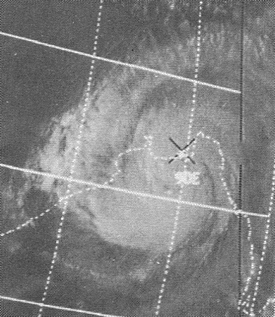 | |
| BOB 03 | 964 | 1981 |  | |
| BOB 07 | 994 | 1997 | 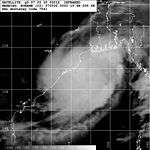 | |
| BOB 06 | 984 | 1998 | 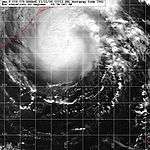 | |
| BOB 04 | 998 | 2000 | 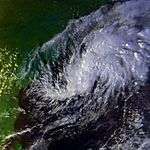 | |
| BOB 03 | 970 | 2002 | 100 | 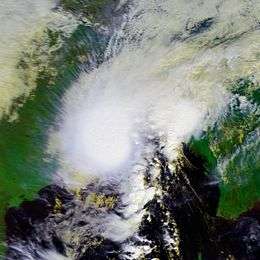 |
| Sidr | 944 | 2007 | 215 | 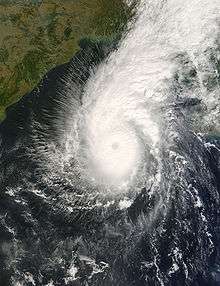 |
| Rashmi | 996 | 2008 | 85 | 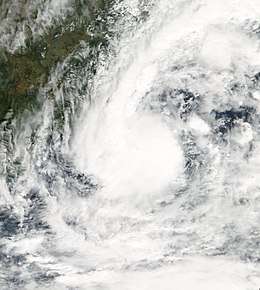 |
| Aila | 970 | 2009 | 120 | 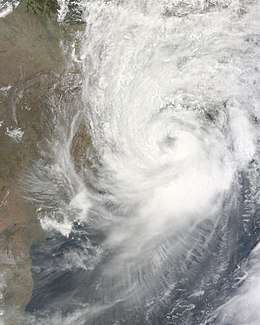 |
| Komen | 986 | 2015 | 75 | 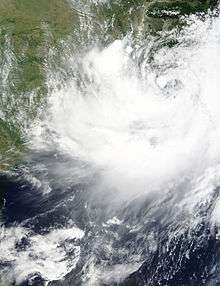 |
| Roanu | 983 | 2016 | 85 | 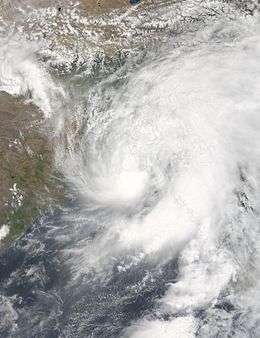 |
| Mora | 978 | 2017 | 110 | 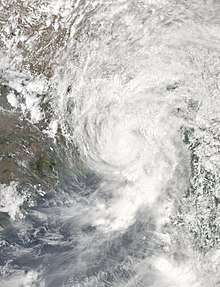 |
| Amphan || 925 || 2020 || 240 || |}
Mountainous region
Because of high altitude, the mountainous parts of Darjeeling and Jalpaiguri districts experience a cool temperate kind of climate. The average temperature in summer is about 15 °C (59 °F), and winter temperature is about 2 °C (36 °F). Snowfall occurs in some part of this region. Being obstructed by the Himalayas, the region receives heavy rainfall. Due to the scenic beauty and temperate climate of the region, a huge number of tourists visit the areas. Here Kalimpong is another hill station which is visited by many tourists in all seasons for its scenic beauty and the averagely cool temperature throughout the year.
Influences
Adequate rainfall in the plains of West Bengal influences crop production. The hot wet climate is good for the production of rice and jute. Higher rainfall received in the northern mountainous region is favourable for the production of tea, which is popular all over the world. Pulses and oilseeds are also produced in large quantities.
The people prefer to wear loose and thin cotton clothes because of the hot humid climate. Rice and fish the staple food of the Bengalis because they are easy to digest in this climate and are easily available. The hot and humid climate hampers the efficiency of the people, as the people tend to get tired easily. For protection against heavy rainfall and snowfall in the north, the people live in houses with sloping roofs.
References
- "Climate". West Bengal: Land. Suni System (P) Ltd. Retrieved 2006-09-05.
- "kal Baisakhi". Glossary of Meteorology. American Meteorological Society. Archived from the original on 2006-08-30. Retrieved 2006-09-05.